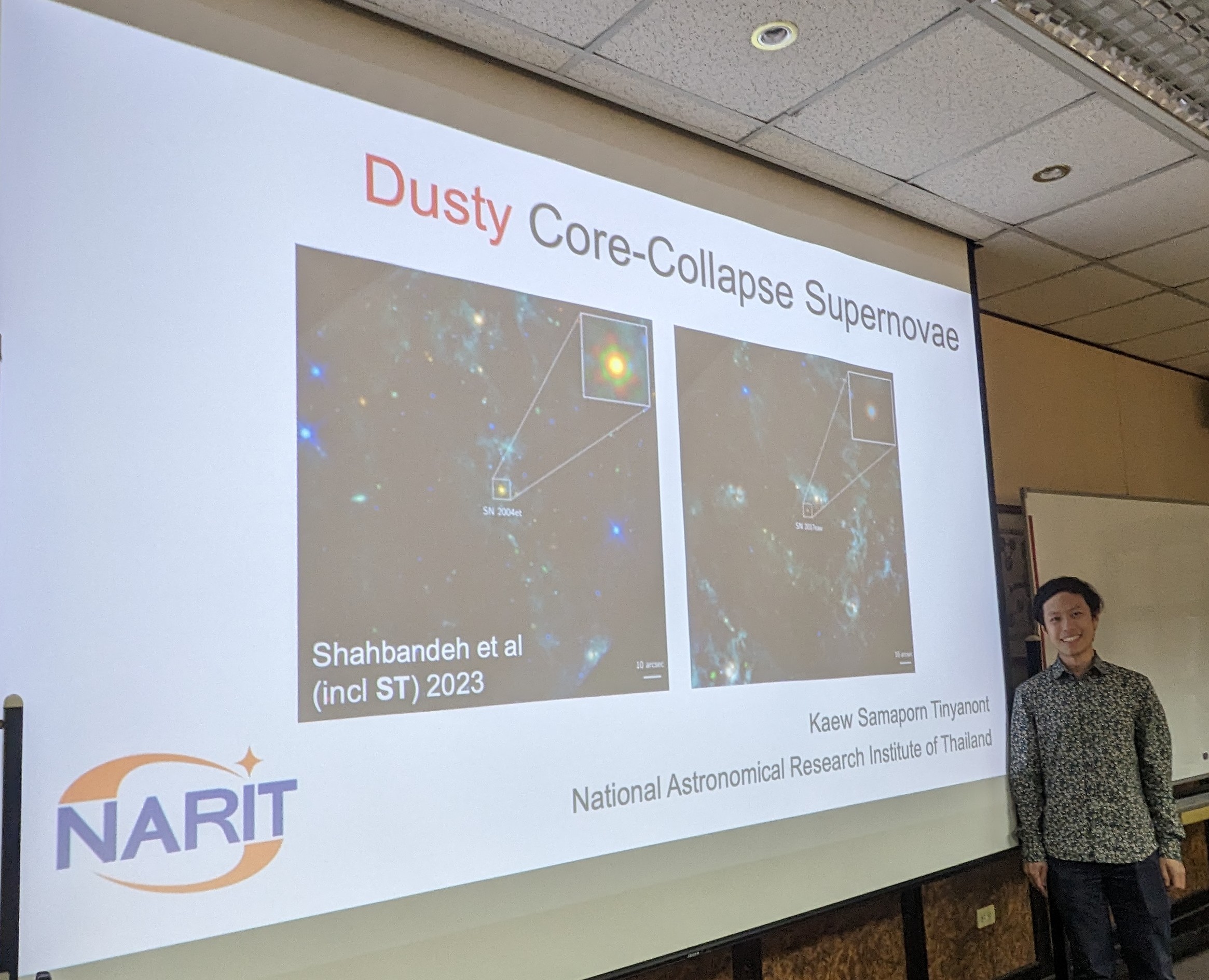Dr. Kaew Samaporn Tinyanont (National Astronomical Research Institute of Thailand)

"Dust after the bang: chemistry in the aftermaths of core-collapse supernovae"
時間/地點: 2024-05-03 14:00 [S4-1013]
摘要:
Dust is one of the foundational constituents of the Universe. It is the major coolant in dense regions in the interstellar medium (ISM). It absorbs ultraviolet and optical photons that are trapped due to the high optical depth, and re-emits them in the infrared where the radiation can escape. Dust cooling allows the ISM to contract and form stars. Dust forms incredibly early in the Universe; thus, affecting most of its evolution. Multiple observations in the sub-millimeter have shown evidence of a large amount of dust as early as z ~ 8. At that time, known dust-producing systems in the local universe (e.g., asymptotic giant branch stars and other low-mass stellar systems) have yet to evolve. Massive stars, with their short evolutionary timescales, must be the source of dust in the nascent universe. Here, I review dust formation in core-collapse supernovae, the best candidate for the dust forming site in the early universe. Chemical evolution models show that molecules and dust grains are expected to form in large quantities in the aftermath of a core-collapse supernova. Piecemeal observations in the past have shown evidence of a large amount of dust formed in various nearby objects. I will discuss the ongoing effort using systematic observations from the James Webb Space Telescope to survey supernova dust formation on a large scale like never before.
回上一頁
